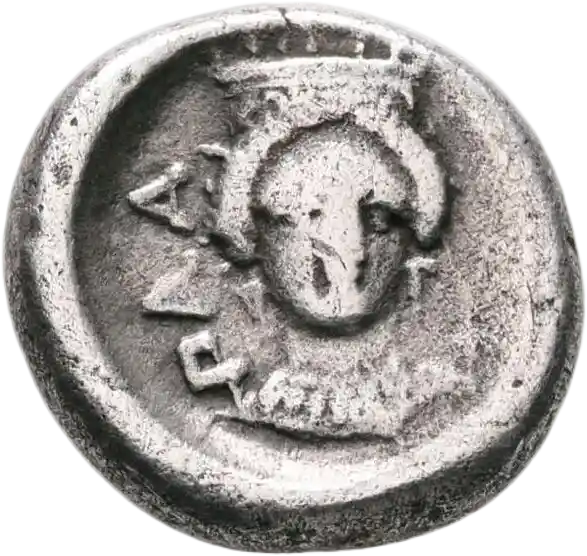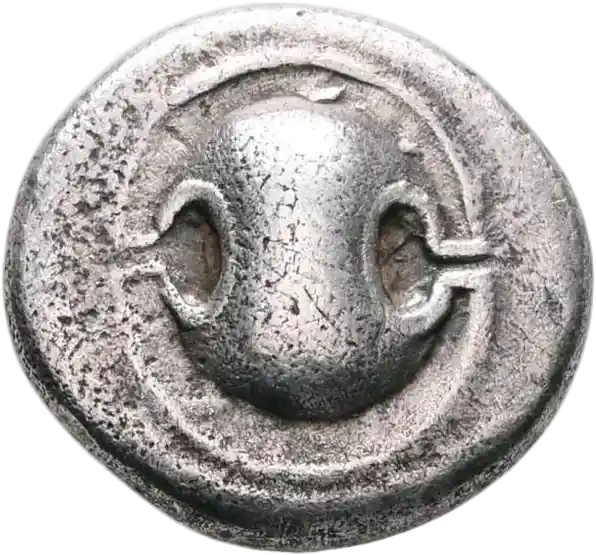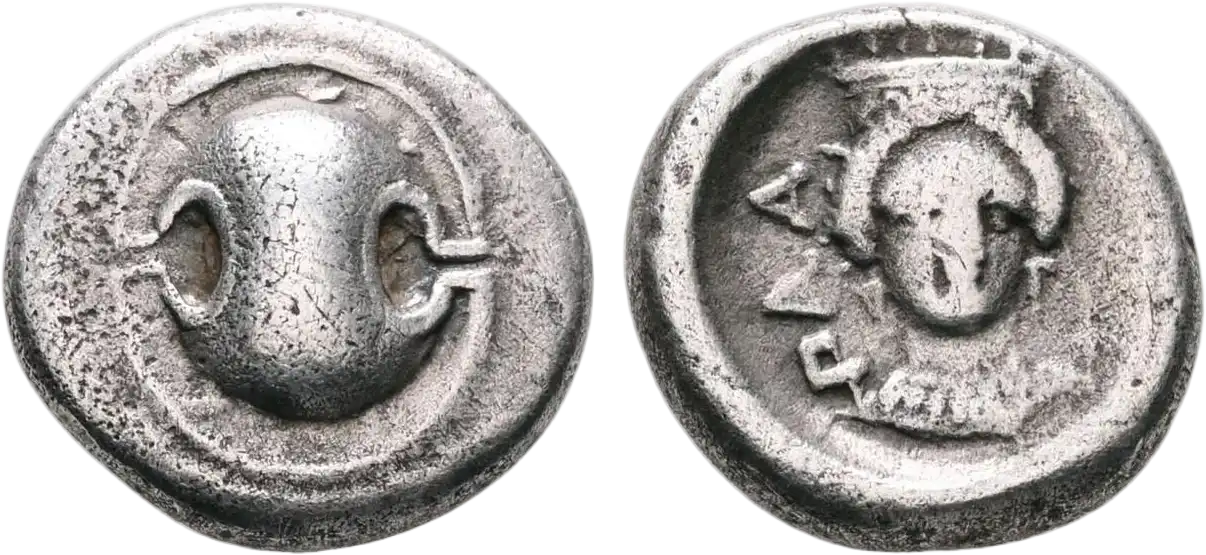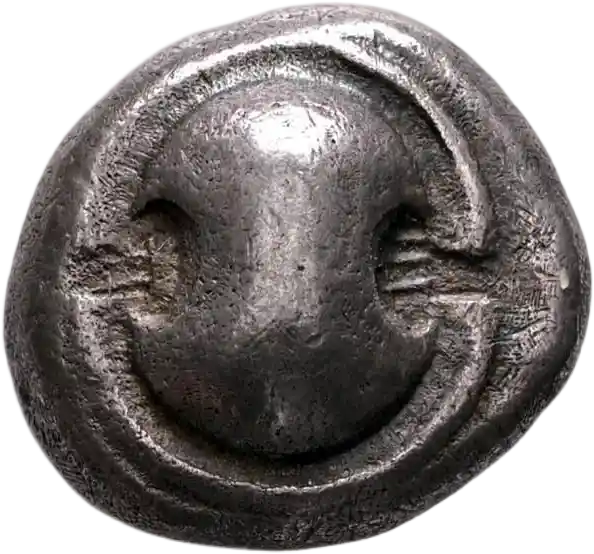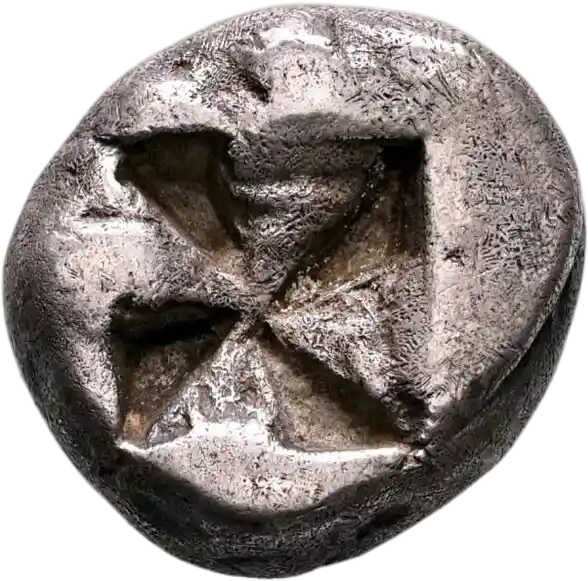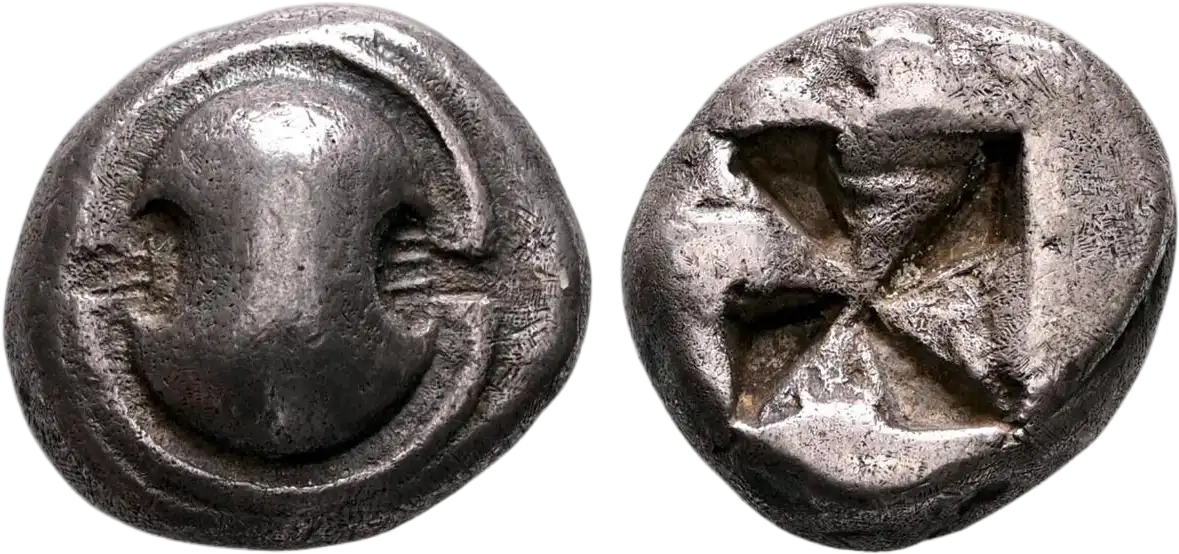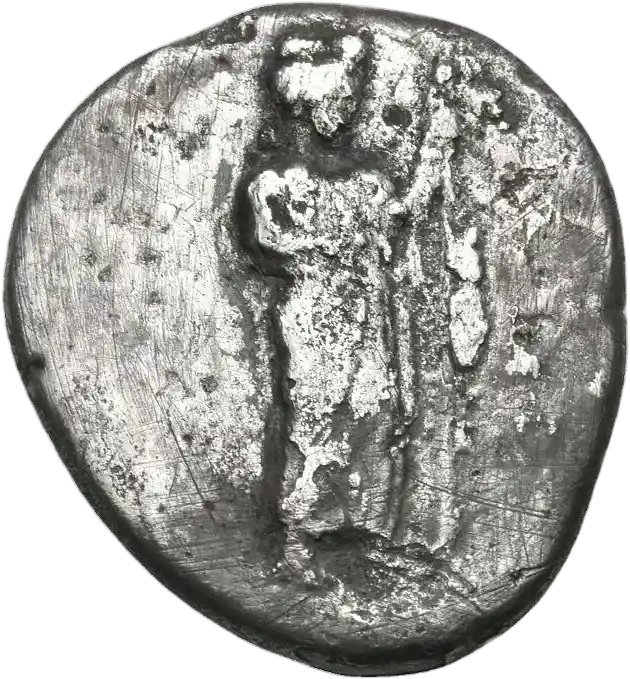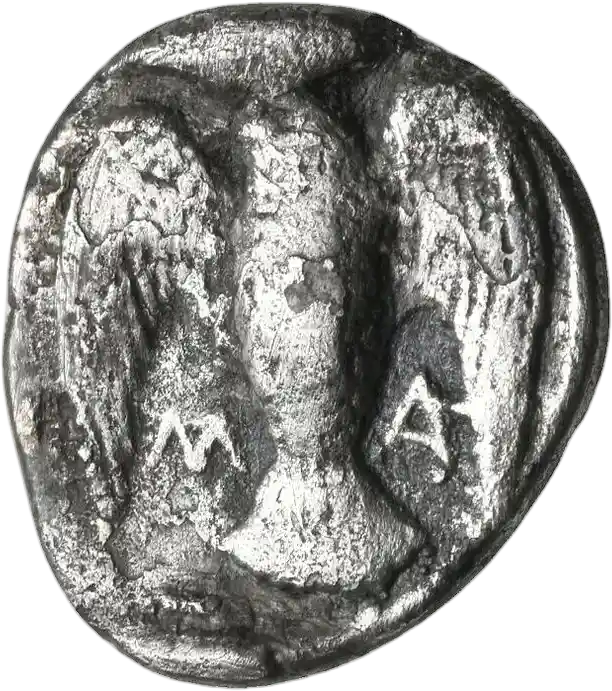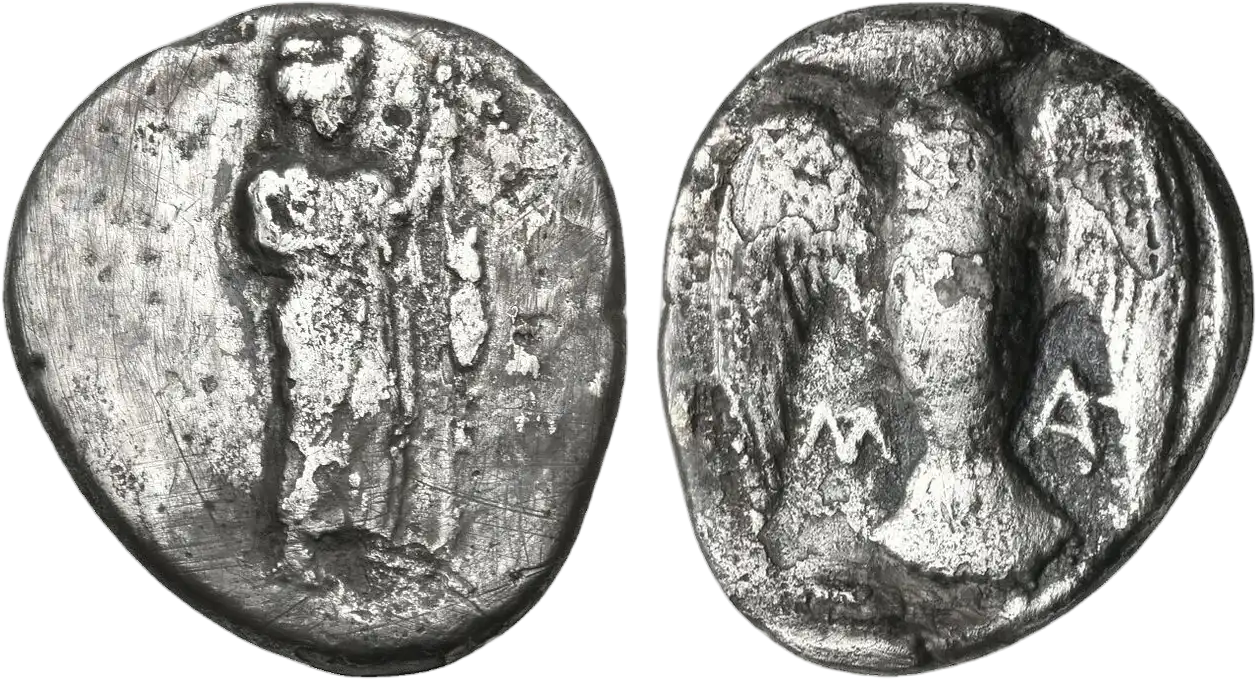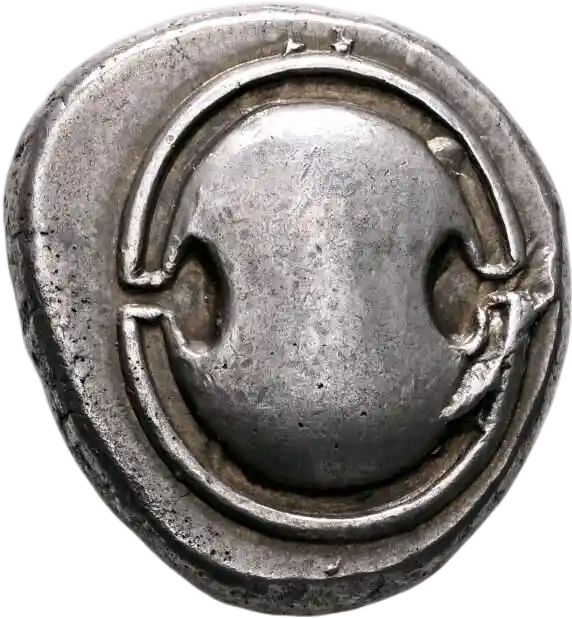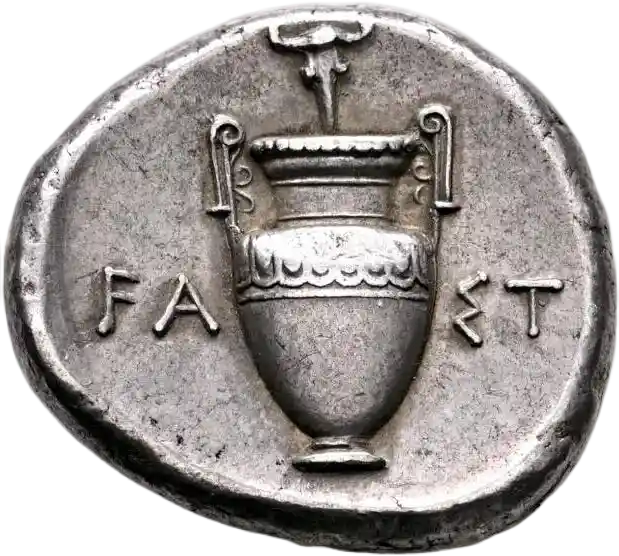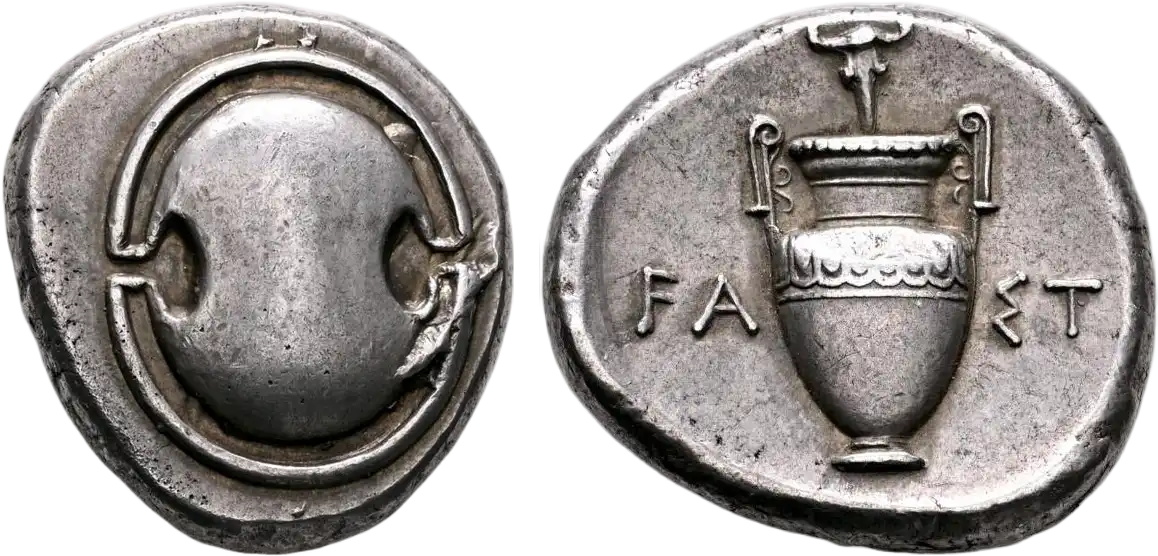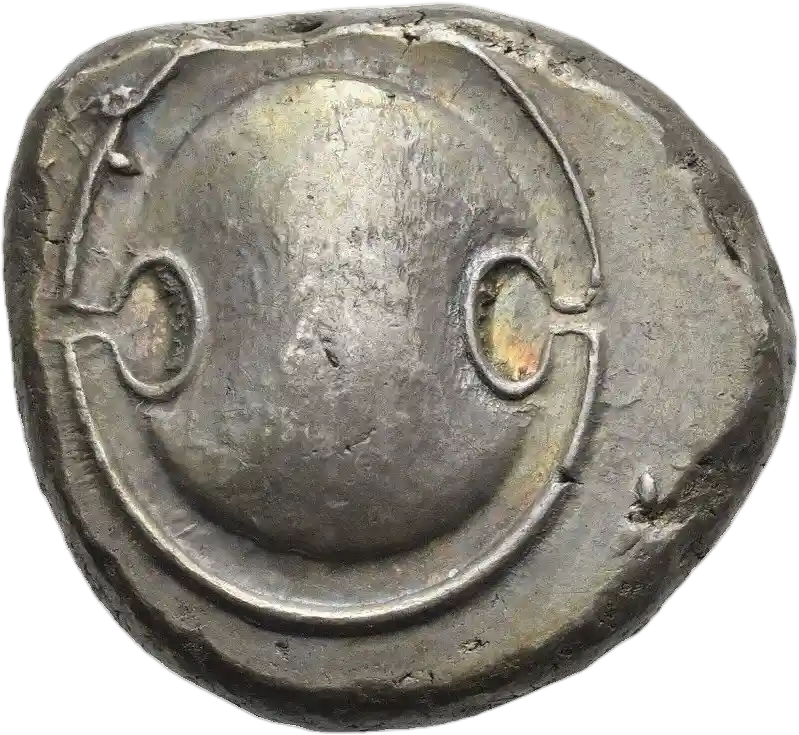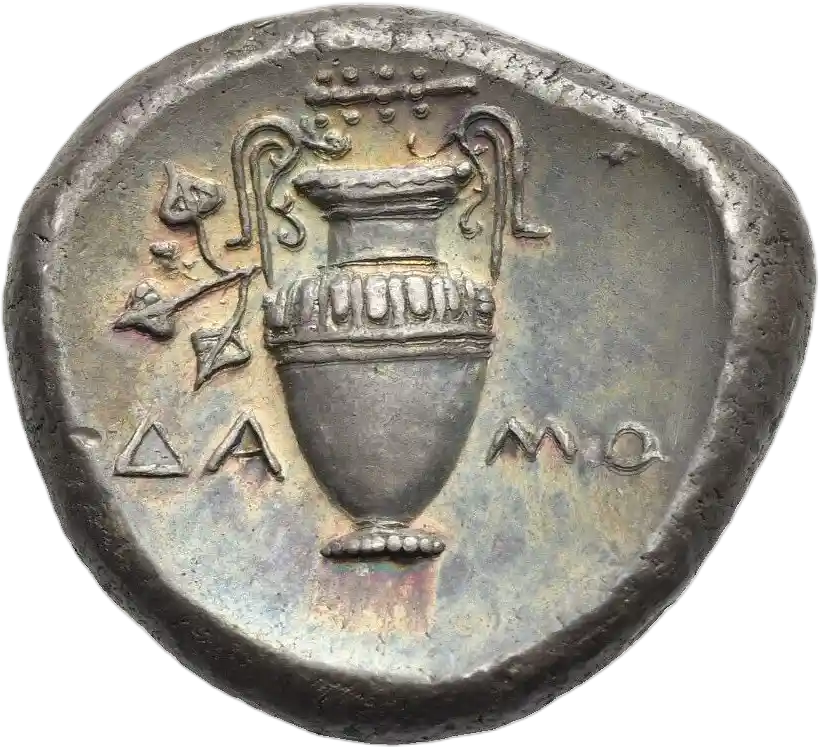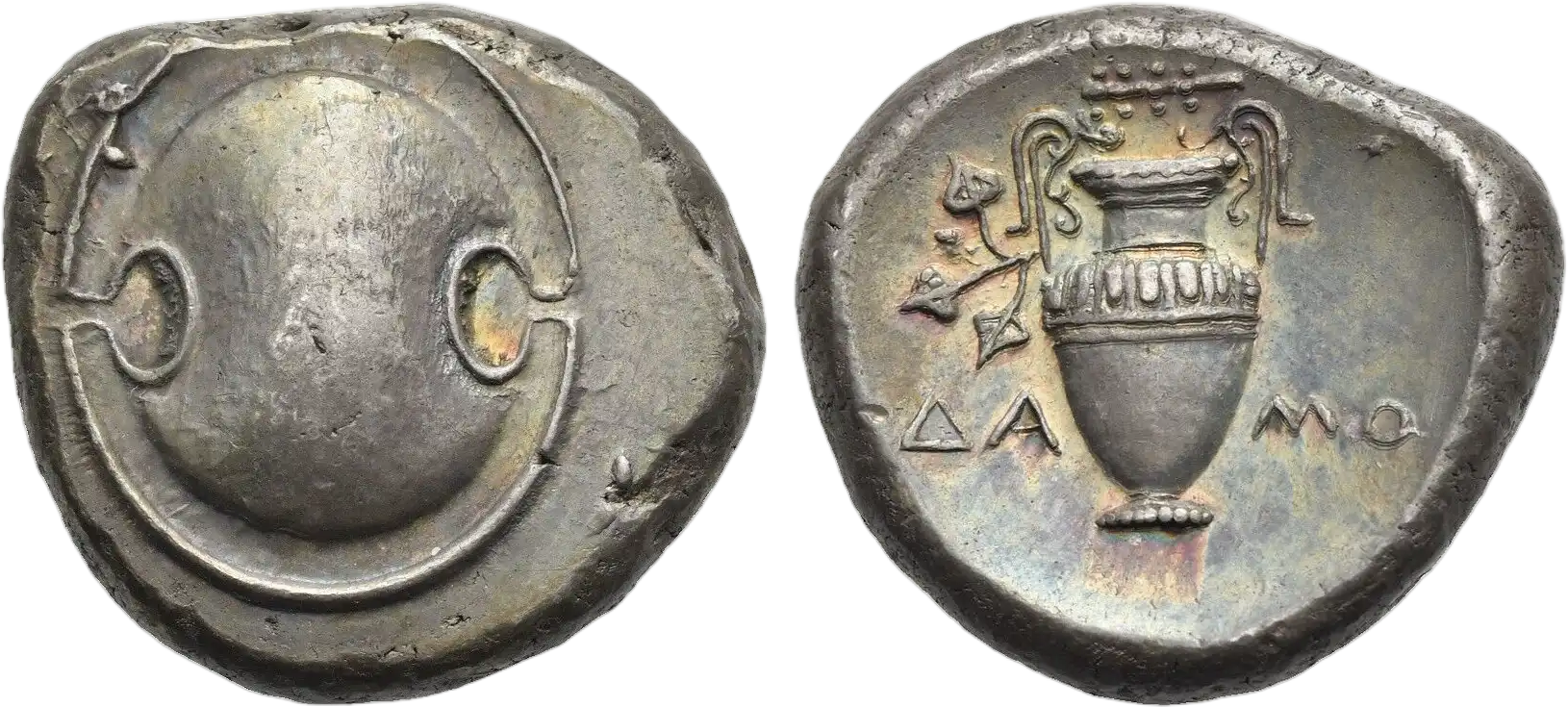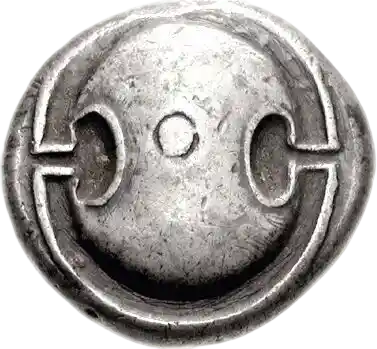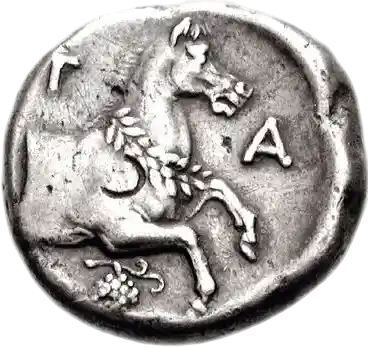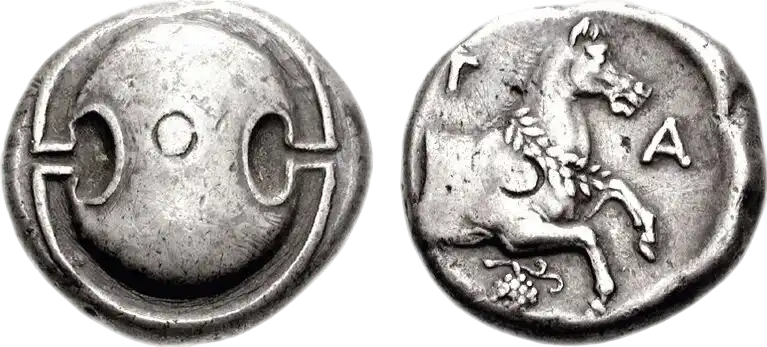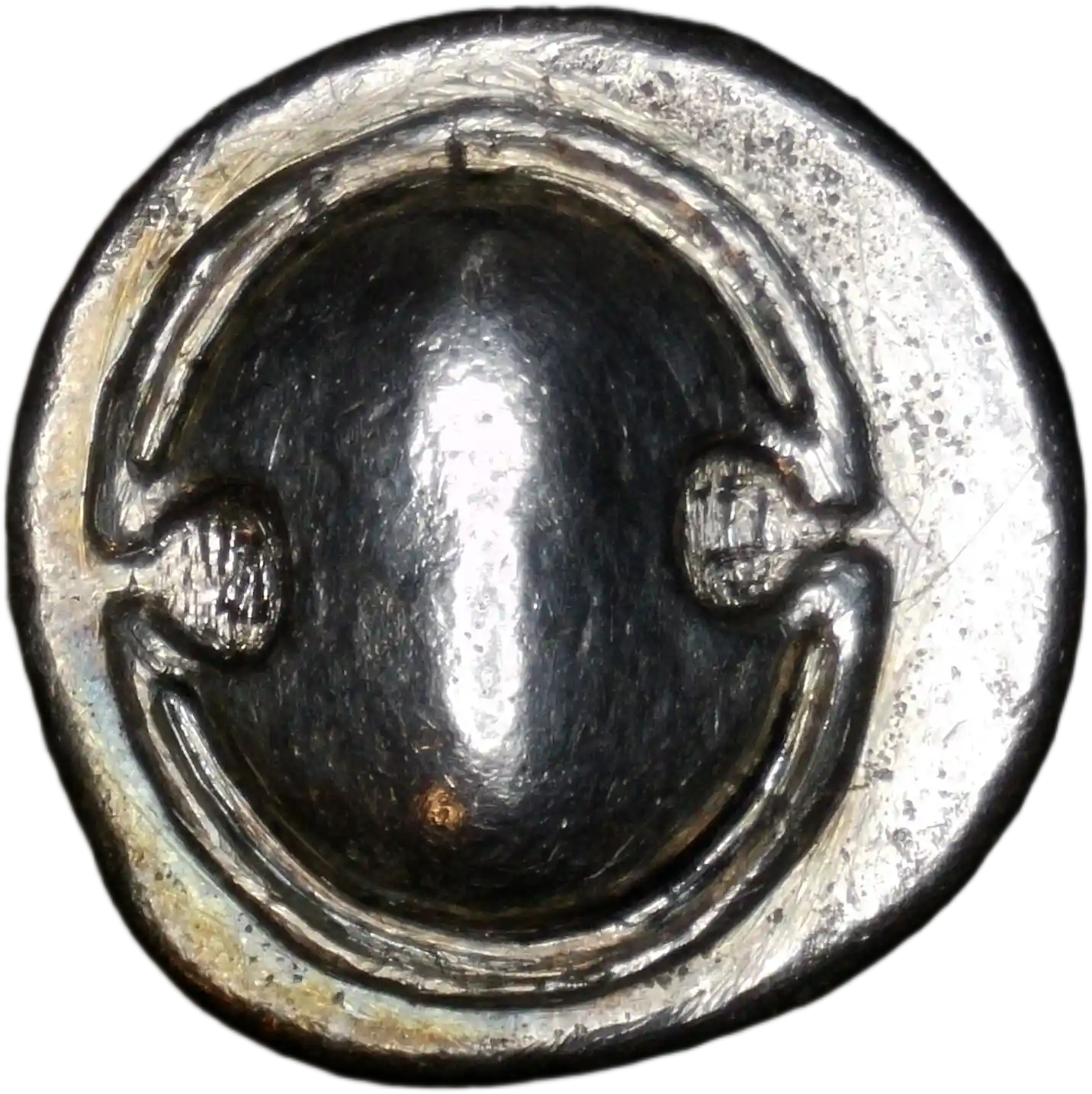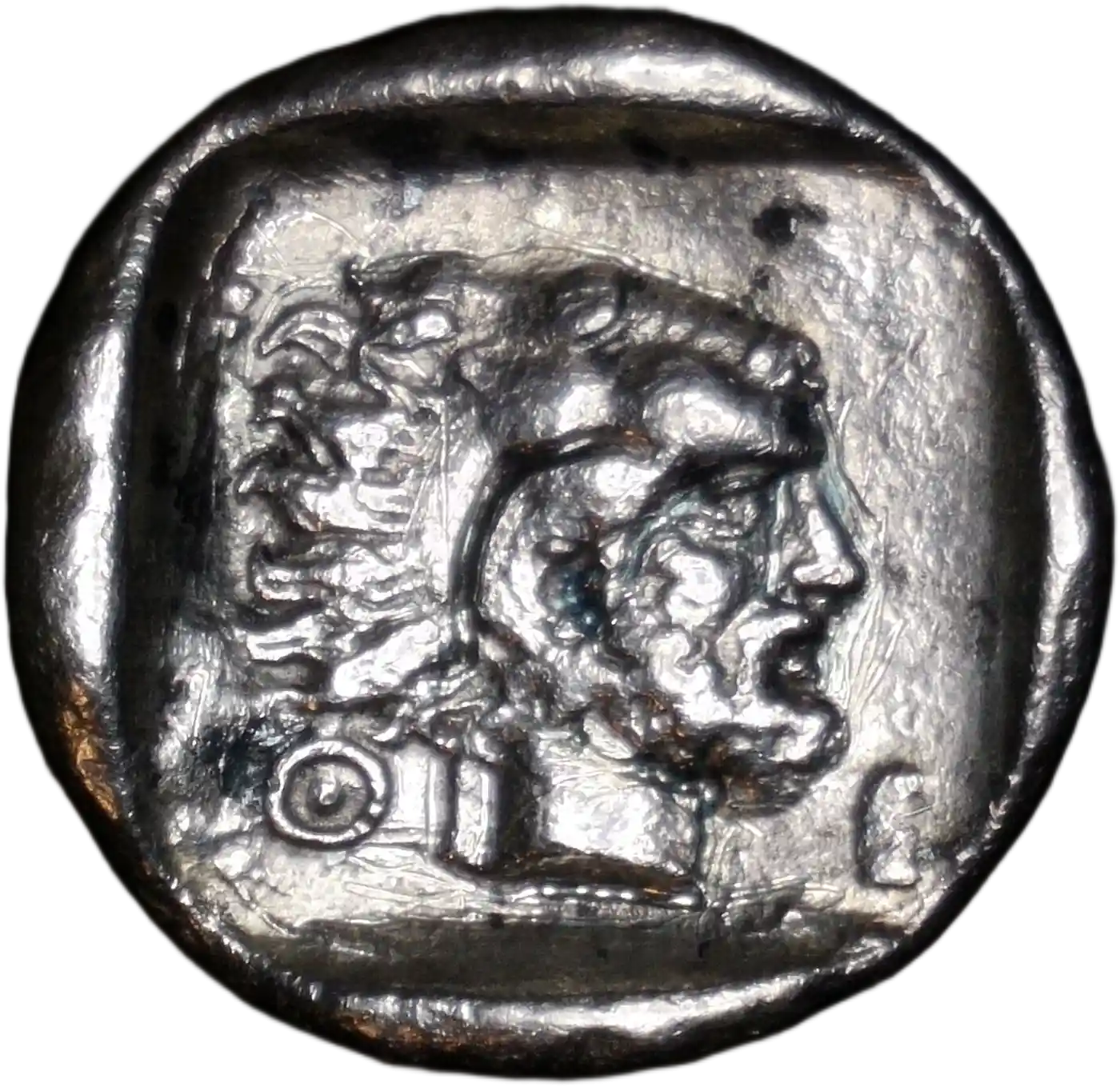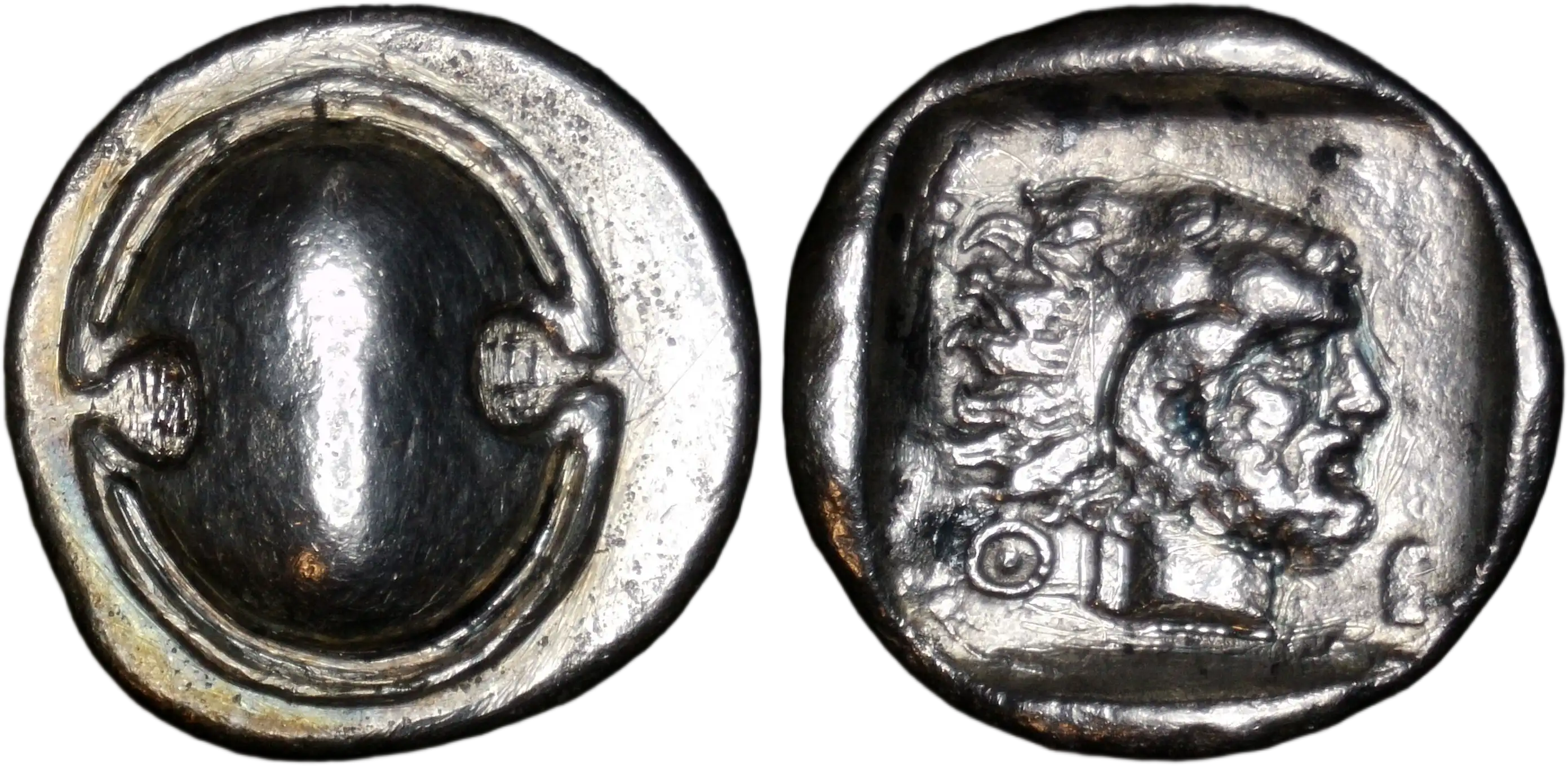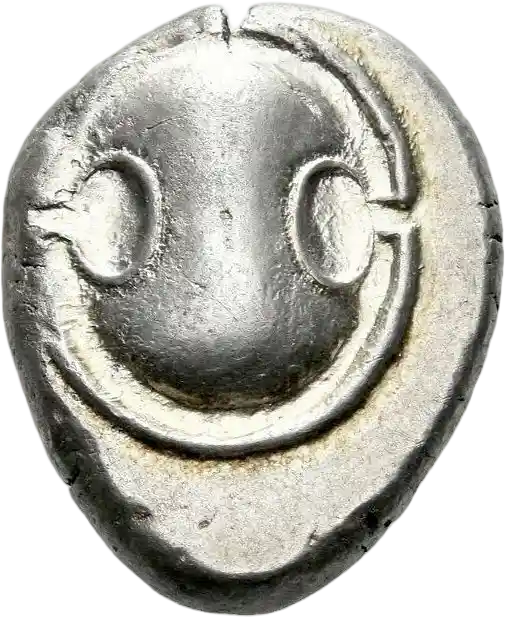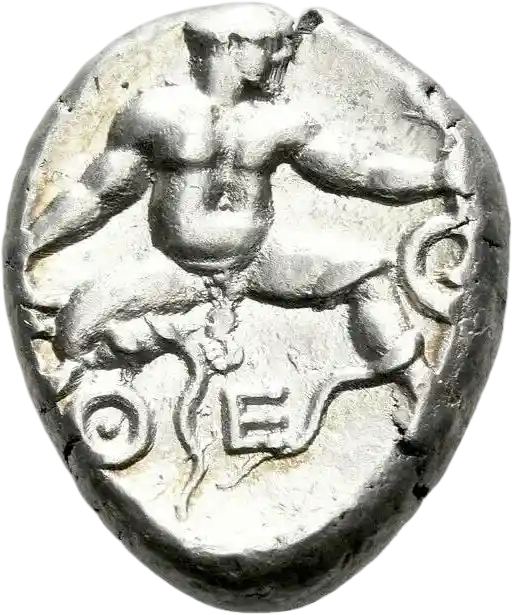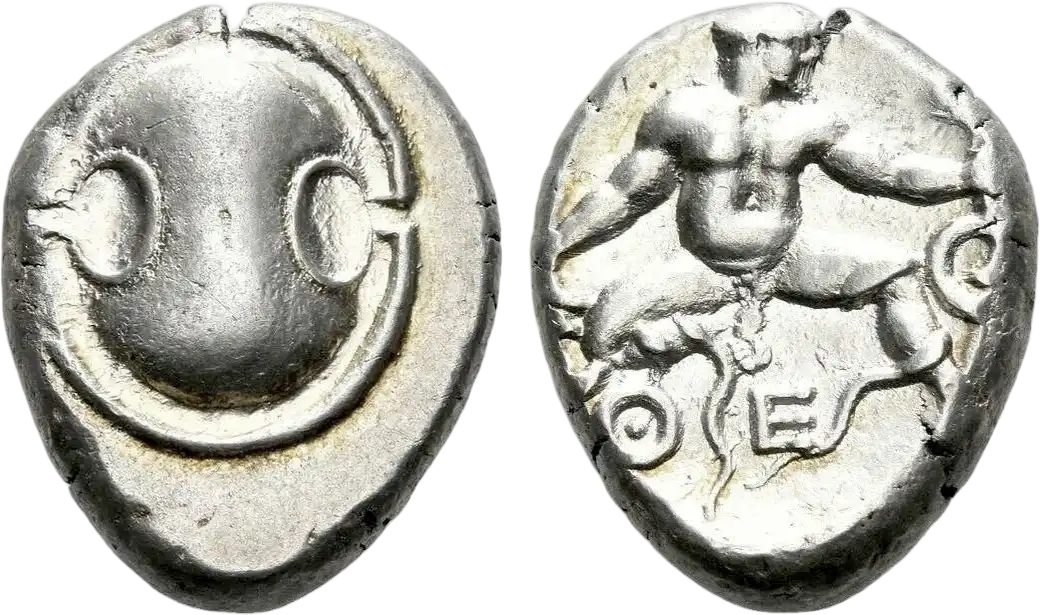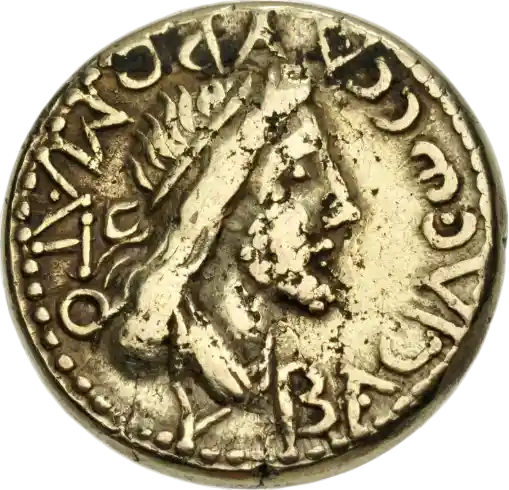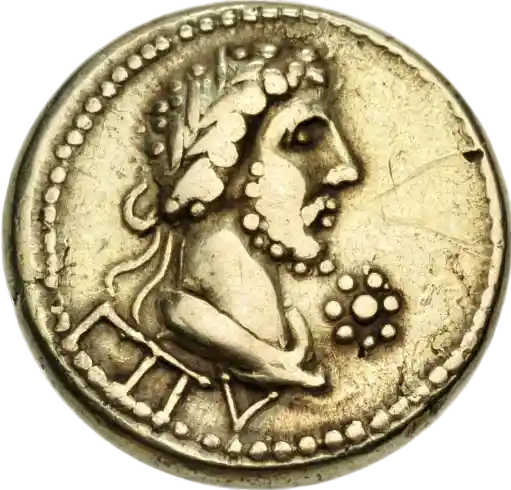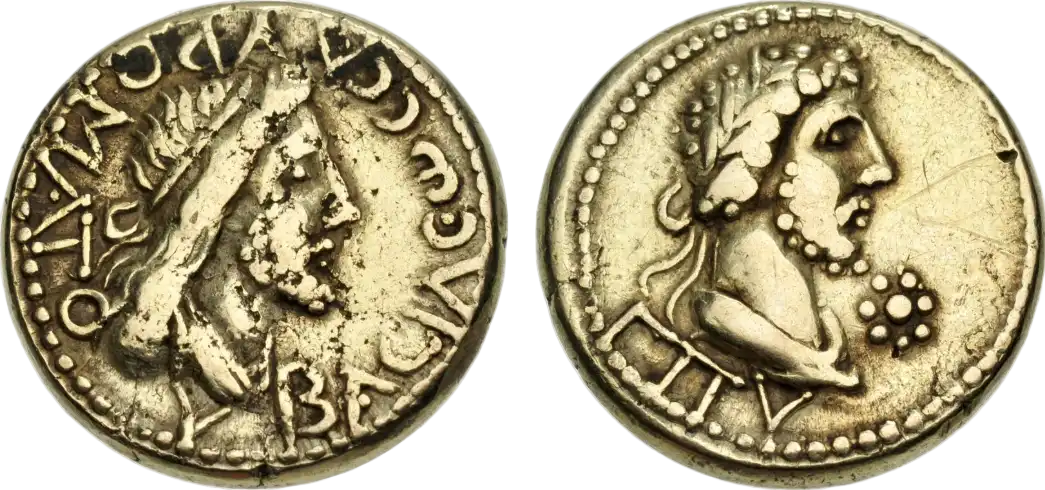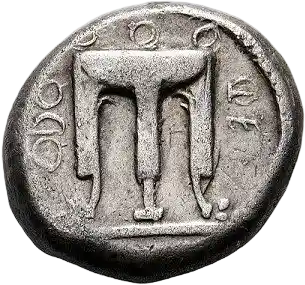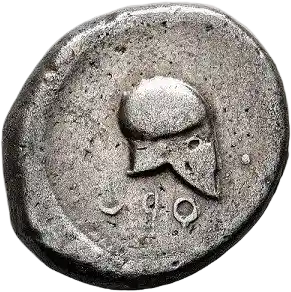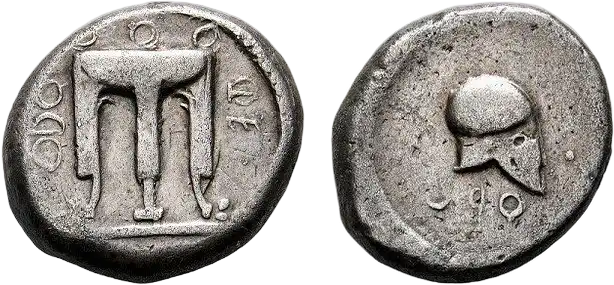Boeotia. Plataiai. Circa 387-372 BC
Hemidrachm (Silver, 13 mm, 2.45 g, 11 h)
Obv. Boeotian shield. Rev. ΠΛΑ Draped bust of Hera facing, head turned slightly to the right, wearing stephanos.
BCD Boiotia 238 (same dies). BMC 2. HGC 4, 1269. SNG Copenhagen 212 (same dies).
Extremely rare. Somewhat porous and struck from worn dies, good fine.
Plataea is an extremely important city in Boeotia. Its roots extend to the Mycenaean times, belonging to the various settlements that were managed by nearby Etruscans. During the dark ages and early Archaic times, Plataea slowly grew into a powerful polis, absorbing nearby settlements into its sphere of influence. By the time of the Persian Wars, it was one of the foremost cities of Boeotia. Throughout the archaic period, Plataea was anti-Theban and allied itself to Orchomenus to attempt to check the advancing power of Thebes. Another ally that the city strongly relied on was Athens, as Plataea was the only other polis to reinforce the army at Marathon, providing 1000 hoplites, when Athens fielded 10000 to face the naval invasion by Darius. The reason for the alliance with Athens was a failed diplomatic mission to Sparta, which was rejected as Plataea was simply "too far" for the Spartans to be able to assist them.
During the Persian Wars, Plataea was the only city in Boeotia that chose not to accept the new Persian overlords and Medize, giving the polis immense respect from the remaining free city-states. After the city was rebuilt following the battle of Plataea (479 BC), the city was granted honors, and a festival of the Eleutheria was held every four years, commemorating the allied victory. A tripod was also dedicated by the city in Delphi. The citizens also invested in a new monumental temple called the Heraion of Plataea (temple to Hera). This temple was so massive in proportion to the relatively small size of the polis created a profound respect in travelers who would eventually write about it.
After the battle, Plataea attempted to ally with Sparta and ask for their aid and protection against the Thebans, which was finally granted. Plataea remained a strong polis through the early classical period, as Thebes was stripped of the leadership of the Boeotian Federation and severely weakened in its military power. Boeotia was rocked by an Athenian invasion, and forcibly admitted into the Delian league (except Thebes, which was never taken), during the first Peloponnesian War (460-445 BC) and the battle of Oenophyta. Plataea joined the league willingly, as it was an ally of Athens.
After the hostilities of the First Peloponnesian War had subsided, the Plataeans began to grow worried at the rapidly increasing strength and encroachment by Thebes. This culminated in the attempted "invasion" by the Thebans in 431 BC, with 300 citizens entering the walls and attempting to convince Plataea to submit. This led to a bloody battle that saw most of the party killed or captured, and Thebes formally declared war on the city. This is one of the three catalyst events that led to the more famous Second Peloponnesian War. Athens had reinforced the city with hoplites and sent away the majority of its citizens to live in the walls of Athens as metics in preparation for a siege, which came in 429 BC. Sparta had arrived, and with their lack of experience in sieges, created a double enveloping wall to starve out the besieged. This lasted for two years, with a successful sortie made in the second year, having had half of the besieged able to escape. The citizens were urged to surrender with the promise of a fair trial, and eventually capitulated in 427 BC, instead being put to death in a kangaroo court held by Thebes. This results in one of the most interesting dialogues recorded by Thyucidides, playing with the themes of loyalty, alliance and justice.
After Thebes gained control of the city, private buildings were razed, and the city was colonized with Theban citizens. After the capture of Scione following their failed revolt, the Athenians allowed the Plateans to resettle the city. They had stayed there for the remaining years of the Pelopponesian War and the subsequent Corinthian War. After the latter conflict was resolved in the Peace of Antalcidas, the Plataeans were restored to their town by the Spartans, as a way to check the power of Thebes; this is how we arrive at when this coin was minted.
After this peace, a new series of civic coinage sprang up in Boeotia, depicting emblems for around 12 various city-state mints that were unique to each. For example: Tanagra chose the forepart of a horse, Kopai the bull, Koroneia the gorgon, Thespiai the crescent and Aphrodite, Mykalessos the lightning bolt (which was contested by Lebadeia). Plataea chose Hera, as she was the chief deity of the Polis, and one of the largest temples ever dedicated to her was built within the city. Interestingly, the shield was chosen for the obverse by all the cities, as this emblem by nature is Theban, but it is believed to have transformed into the regional emblem due to its continued usage for almost two centuries on coinage. Hera is depicted on the coinage of Plataea as a bust, always adorned with a stephanos. She is either depicted in a side profile, which is far more common, or facing towards the observer, which is significantly rarer. Both of these designs are known from a Hemidrachm and Obol variants. A smaller series of bronze coinage is known from the city, which is also seen in other mints, depicting a large denomination around 8 grams, with a Boeotian shield obverse, and the three-letter abbreviation of the mint for the reverse. These are extremely rare and known for: Tanagra, Plataea, Haliartos, Thespiai.
As all good things must come to an end, so does this series of coinage. In 379 BC, Thebes freed itself from its Spartan garrison and began its path to hegemony of not just Boeotia, but half of the Greek world. Plataea, being one of the foremost anti-Theban poleis, was targeted and eventually became a target for Thebes to subdue. in 373-2 It is believed that the city ultimately fell to Thebes, and did not recover on its own afterwards. The city was rebuilt by Philip II and Alexander III of Macedon to act as a counter to the then destroyed Thebes and act as a head for the new Boeotian league (338-323BC). This, however, was a fruitless attempt, as Kassander rebuilt Thebes in 316 BC, which quickly resumed its position as head of the league and became a permanent shadow looming over Plataea. After this, the city slowly fades out of relevance, being reduced to a tourist destination in Roman times, where we hear the festival dedicated in 479 BC was still ongoing, and the site was visited by several prominent Roman figures.
Such is the tale of an unfortunate city. Plataea was true to the belief of Greek freedom and acted as a stronghold against Theban supremacy within the region.

